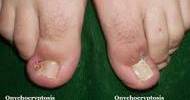By examining the strongest known genetic risk factor for schizophrenia, scientists at Rutgers University and Emory University are learning more about how the disease manifests. A 40-fold greater incidence of schizophrenia results from a minor deletion on chromosome 3 known as the 3q29 deletion syndrome.
In two different models of the 3q29 deletion syndrome, including mice with the deletion generated using CRIPSR and human brain organoids, or three-dimensional tissue cultures used to investigate disease, researchers have now evaluated overlapping patterns of altered gene activity.
These two systems both exhibit impaired mitochondrial function. This dysfunction can cause energy shortfalls in the brain and result in psychiatric symptoms and disorders.
“Our data give strong support to the hypothesis that mitochondrial dysregulation is a contributor to the development of schizophrenia,” said Jennifer Mulle, associate professor of psychiatry, neuroscience and cell biology at Rutgers Robert Wood Johnson Medical School and a co-senior author of the study published in Science Advances. “The interplay between mitochondrial dynamics and neuronal maturation is an important area for additional detailed and rigorous study.”
Mulle, a member of the Center for Advanced Biotechnology and Medicine at Rutgers, and colleagues first showed that 3q29 deletion was a risk factor for schizophrenia in 2010. The results are consistent with research on the 22q11 deletion syndrome (commonly known as DiGeorge syndrome), another genetic risk factor for schizophrenia that has also been discovered to include impaired mitochondrial function.
“For genetic variants associated with schizophrenia, we want to understand the primary pathology at the cellular level,” said Ryan Purcell, assistant professor of cell biology at Emory University School of Medicine and co-lead author of the study. “This gives us a foothold, which may help cut through schizophrenia’s polygenic complexity and better understand the neurobiology.”
Our data give strong support to the hypothesis that mitochondrial dysregulation is a contributor to the development of schizophrenia. The interplay between mitochondrial dynamics and neuronal maturation is an important area for additional detailed and rigorous study.
Professor Jennifer Mulle
About one in 30,000 people are born with 3q29 deletion syndrome. The 3q29 deletion can cause intellectual disability, autistic spectrum disorder, and congenital heart problems in addition to raising the risk for schizophrenia.
Although the contributions of individual genes inside the deletion are still being uncovered, the effect of the 3q29 deletion on schizophrenia risk exceeds that of any single known gene variant.
The discovery that several schizophrenia-related chromosomal deletions damage mitochondria defies the field’s anticipation that these mutations would affect the proteins in the synapses that link neurons. The function of energy-hungry synapses depends on mitochondria, hence both models might not be in opposition.
It was also unexpected that only one of the 22 genes in the deletion appears to encode a protein found in mitochondria, explaining why 3q29 cells have dysfunctional mitochondria. However, that gene or others within the interval may instead regulate the production or importation of mitochondrial proteins, the researchers said.
Mitochondria, which are found in every cell, produce energy from sugar or fat. Sometimes this process is aerobic (done with extra oxygen from inhaled air) and sometimes anaerobic (done without oxygen).
3q29 cells lack metabolic flexibility, meaning their mitochondria have trouble adjusting to changes in energy sources, as a result of altered mitochondrial activity. Because maturing neurons must transition to reliance on aerobic energy production as they differentiate, this may obstruct neuronal development.
The results illustrate how 3q29 deletion affects the whole body, not just the brain: In addition to brain cells, kidney cells also exhibit the effects on mitochondria. Due to decreased fat metabolism, people with 3q29 deletion syndrome also tend to be lower in stature.
“Eventually, we want to understand which cellular changes like these are linked to specific clinical outcomes, which could help in designing more effective therapeutic strategies,” Purcell said.
















